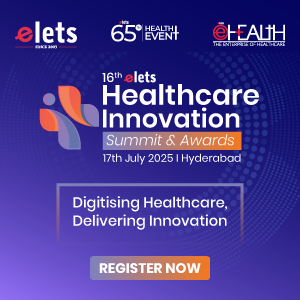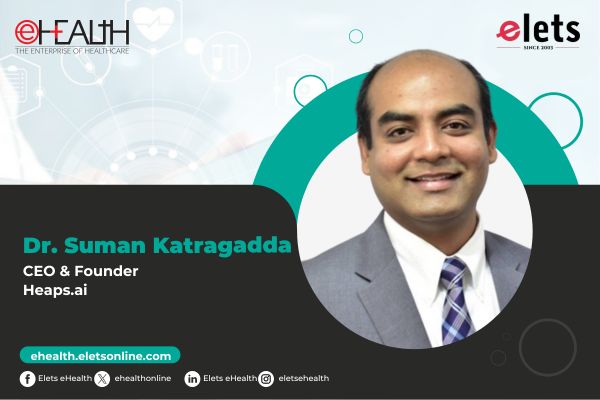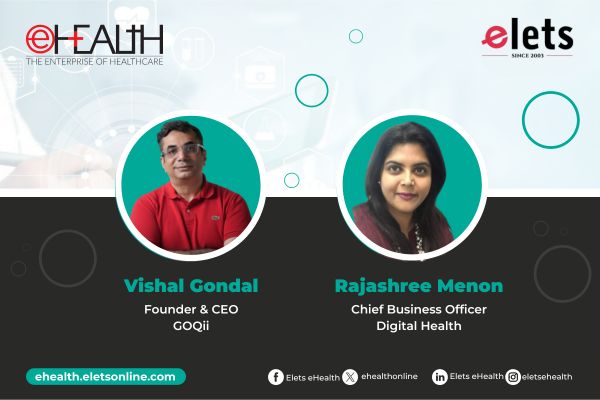
According to a report released for the World Sight Day 2024, research reveals that providing glasses to children with uncorrected vision could unlock an annual economic potential of ₹156 billion in India. This study, published by the International Agency for the Prevention of Blindness (IAPB) and the Seva Foundation, emphasizes how clear vision not only impacts individual lives but also has profound economic implications for national growth.
In the B2B healthcare ecosystem, where industry stakeholders collaborate to improve outcomes through innovation, these insights highlight how eye care can align with broader goals of health equity and productivity. With over 3.4 million children in India living with uncorrected refractive errors, improving vision is not just a medical necessity but also a strategic economic opportunity.

Vision Correction: A Pathway to Productivity Gains
According to the report titled “Learning and Economic Productivity Losses from Uncorrected Refractive Error in Schools,” children with poor vision learn only half as much as their peers with corrected eyesight. The learning gap results in reduced lifetime earnings, which—when aggregated—affects national productivity. Key findings from the report include:

- 55.6% more lifetime income: A child provided with glasses early in life will earn significantly more over their lifetime, highlighting the long-term impact of early intervention.
- 1.2 million years of schooling lost: Annually, India loses 1.2 million school years to uncorrected vision problems, a stark reminder of the importance of accessible eye care.
- Double the learning rate: Students with refractive errors, if provided with glasses, could achieve double the academic progress compared to those without corrective lenses.
Vinod Daniel, CEO of the India Vision Institute (IVI), emphasizes the importance of early access to screenings and corrective glasses, especially for children in government and tribal schools. “Clear vision forms the foundation for academic success, enabling children to build better futures and uplifting entire communities,” he explains.

Uncorrected Vision: A Hidden Barrier to National Development
The consequences of uncorrected refractive errors extend far beyond classrooms. Without adequate intervention, millions of children are hindered from reaching their full potential, which translates to reduced GDP per capita in the long term. This loss of human capital and productivity poses a challenge for a nation striving to harness the potential of its youth population.

Brad Wong, Chief Economist at Seva Foundation, remarks, “India has the highest potential schooling gains globally, with 1.2 million school years recoverable annually. This surpasses China’s 730 million and Brazil’s 310 million, underscoring the critical role eye care plays in future economic growth.”
Corporate Role in Eye Health Initiatives
The healthcare sector, including pharmaceutical companies, health insurers, and device manufacturers, can play an essential role in addressing these issues by:
- Collaborating with Schools and NGOs: Partnering with organizations like IAPB and IVI to facilitate school-based eye screenings and distribute corrective glasses.
- Supporting Digital Vision Care Platforms: Leveraging telemedicine and AI-based tools to conduct virtual screenings in remote areas.
- Launching CSR Programs: Corporates can integrate eye health initiatives into their corporate social responsibility (CSR) frameworks to promote sustainable impact in education and public health.
Innovations Driving Eye Care and Awareness
With children across India participating in the ‘Glasses of the Future’ competition for World Sight Day, efforts to raise awareness about eye health are gaining momentum. The event encourages students to design innovative eyewear, bringing attention to the importance of regular eye checks.
Peter Holland, CEO of IAPB, emphasizes the importance of timely eye care, “Early intervention and quality eye care are not optional; they are essential to unlocking educational opportunities and economic potential. Eye health in young people must be prioritized if we aim to build a future-ready workforce.”
Also Read: Championing Children’s Eye Health: World Sight Day 2024
Implications for Healthcare Stakeholders
The findings from the IAPB-Seva Foundation study have clear implications for healthcare providers, insurers, and policymakers:
- Payers and Insurers: Health insurers can integrate vision care programs into their offerings, ensuring preventive care to reduce long-term health costs and improve productivity.
- Medical Device Manufacturers: Opportunities exist to develop affordable, high-quality eyeglasses that cater to children, particularly in underserved communities.
- Public-Private Partnerships: Government and industry collaboration can enhance the distribution of eyewear through innovative supply chains, ensuring that vision correction reaches the most vulnerable populations.
Eye Health as a Strategic Priority
The report urges policymakers and healthcare leaders to prioritize vision health to unlock India’s economic potential. Implementing nationwide screening programs and making affordable eyewear accessible can help bridge the gap between health and education outcomes.
Additionally, organizations involved in occupational health may consider expanding their focus to include children’s vision care. Companies that foster a healthy workforce today—by investing in the vision health of future employees—position themselves as industry leaders, building a healthier, more productive workforce for tomorrow.
Vision Care as a Pillar of Economic Growth
World Sight Day 2024 serves as a reminder that vision correction is a key enabler of personal and national growth. As businesses, governments, and NGOs come together to address the unmet need for children’s eye care, the Indian healthcare sector has the opportunity to drive meaningful change through collaboration.
Addressing uncorrected vision not only improves children’s academic performance and quality of life but also aligns with India’s broader goals of economic growth and workforce development. By investing in vision health, stakeholders across the healthcare value chain can create a ripple effect—enhancing educational outcomes, productivity, and national prosperity.
The wider healthcare community must recognize that eye health is not just a healthcare concern but an economic imperative. By working together to close the vision care gap, the sector can empower children, support education, and unlock billions in economic potential.
Be a part of Elets Collaborative Initiatives. Join Us for Upcoming Events and explore business opportunities. Like us on Facebook , connect with us on LinkedIn and follow us on Twitter , Instagram.
"Exciting news! Elets technomedia is now on WhatsApp Channels Subscribe today by clicking the link and stay updated with the latest insights!" Click here!
















